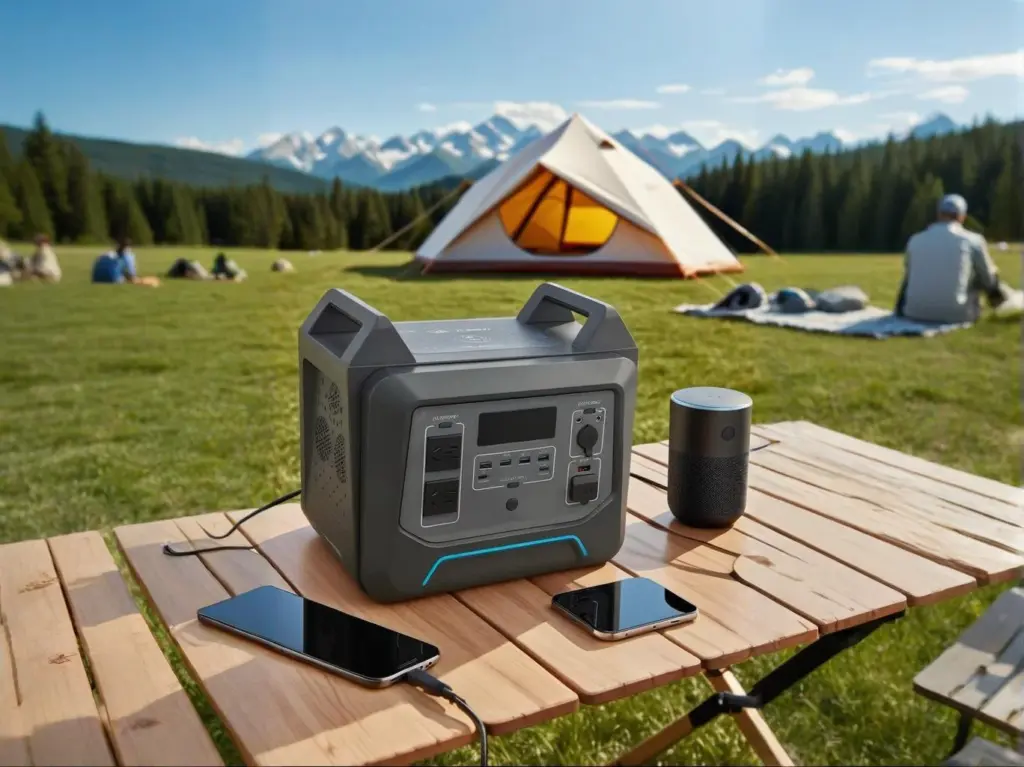Introduction
From camping trips and van life to remote work and preparing for unexpected power outages, the “Portable Power Station” has become an essential device for bringing peace of mind and freedom to our lives. However, with a vast array of models on the market, it’s easy to feel overwhelmed and ask, “Which one is right for me?”
Capacity, output, safety… the checklist is long. It’s a significant investment, and you want to get it right. This article will break down the “6 Key Factors to Consider” to help you, even if you’re a beginner, find the portable power station that perfectly matches your lifestyle and needs.
Factor 1: Capacity (Wh) – How Long Can It Power Your Gear?
The most fundamental specification to consider is “capacity.” Measured in Wh (Watt-hours), this number tells you how much energy the unit can store. The higher the Wh, the longer you can run your devices.
Key Considerations:
・Day Trips & Phone Charging (~500Wh): If your primary goal is charging smartphones and tablets, a smaller, compact unit is sufficient.
・Weekend Camping/Van Life (500Wh – 1500Wh): Ideal for running low-power appliances like a mini-fridge, fan, or electric blanket for several hours.
・Extended Trips & Home Backup (1500Wh+): These large-capacity models can handle high-power appliances like microwaves and induction cooktops, providing true peace of mind during a multi-day outage.
Factor 2: Power Output (W) – What Appliances Can It Run?
“Rated Output” indicates how much power the station can deliver continuously, measured in W (Watts). The power consumption of any appliance you want to use must be lower than this rated output.
Key Considerations:
・Always check the “wattage (W)” of your devices. If you plan to use a hairdryer (~1200W) or an electric kettle (~1000W), you’ll need a power station with a rated output higher than that.
・Most products have a “peak power” or “surge power” rating to handle initial power spikes, but it’s safest to choose based on the “rated output.”
Factor 3: Battery Type & Safety – The All-Important “Heart” of the Unit
The safety and longevity of a portable power station are determined by its internal “battery type.” The most common types today are “Ternary Lithium-ion” and the safer “Lithium Iron Phosphate (LiFePO4).”
But now, a next-generation technology is emerging: the Solid-State Battery.

Key Considerations:
・Safety is the Ultimate Feature: Traditional batteries contain a flammable liquid electrolyte. In contrast, a solid-state battery uses a solid electrolyte, fundamentally eliminating the risk of leakage and subsequent thermal runaway or fire. This “inherent safety” is invaluable, especially for use in vehicles or in homes with children and pets.
・Revolutionary Lifespan: Solid-state batteries also boast superior structural stability, resulting in a significantly longer cycle life. For example, the JD ALL Power 2044Wh Power Station, an industry-first to feature this technology, achieves over 2000 deep charge/discharge cycles, ensuring you can rely on it for years to come.
Factor 4: Charging Speed & Methods – Is It Ready When You Are?
The larger the capacity, the longer it takes to recharge the unit itself. A power station is useless if it’s not charged when you need it.
Key Considerations:
・AC Fast Charging: Check the charging speed from a wall outlet. The latest models can be fully recharged in under two hours. The JD ALL Power 2044Wh model leads the industry with its fast-charging technology, reaching a full charge in just 1 hour and 50 minutes.
・Versatile Charging Options: Support for solar panel and car charging provides immense flexibility, allowing you to replenish power outdoors or on the move.
Factor 5: Portability & Design – Can You Carry It? Is It Easy to Use?
As capacity increases, so do weight and size. It’s a trade-off.
Key Considerations:
・Weight vs. Capacity: If you’ll be moving it frequently, weight is a critical factor. The JD ALL Power 2044Wh model strikes an excellent balance, offering a massive 2044Wh capacity in a relatively lightweight 18.5kg design.
・User-Friendliness: Sturdy handles, a clear display, and an intuitive port layout are all crucial for a positive user experience.
Factor 6: Extra Features – The Bells and Whistles
Modern power stations come with features that can further enhance your life.
Key Considerations:
・UPS (Uninterruptible Power Supply) Function: Instantly switches to battery power (e.g., in 30ms) during an outage. This is vital for protecting data on a computer or keeping medical equipment running.
・Voice Control: Models like the JD ALL Power 2044Wh Power Station offer voice commands for lighting and SOS functions, adding a layer of convenience and high-tech ease, especially in emergencies.
Conclusion: Making a Future-Proof Choice
Choosing a portable power station is more than just comparing specs; it’s an investment in “peace of mind” and “new possibilities” for your lifestyle.
Above all, the safety of the battery—the heart of the product—is a point that should never be compromised. While traditional technologies have improved, if you’re looking toward the future standard, a model with a solid-state battery is the wisest choice, offering both inherent safety and superior longevity.
If you are looking to experience the future of portable power today—with unparalleled safety, performance, and cutting-edge technology—we invite you to explore the JD ALL Power 2044Wh Solid-State Power Station. The power to make your life safer and more liberated is here.


